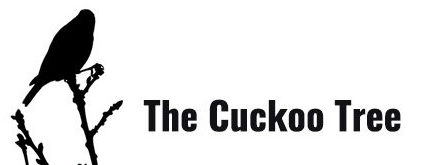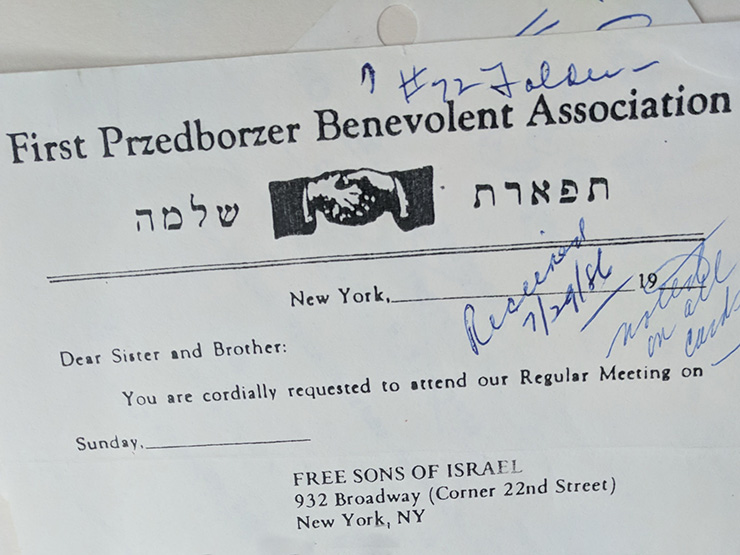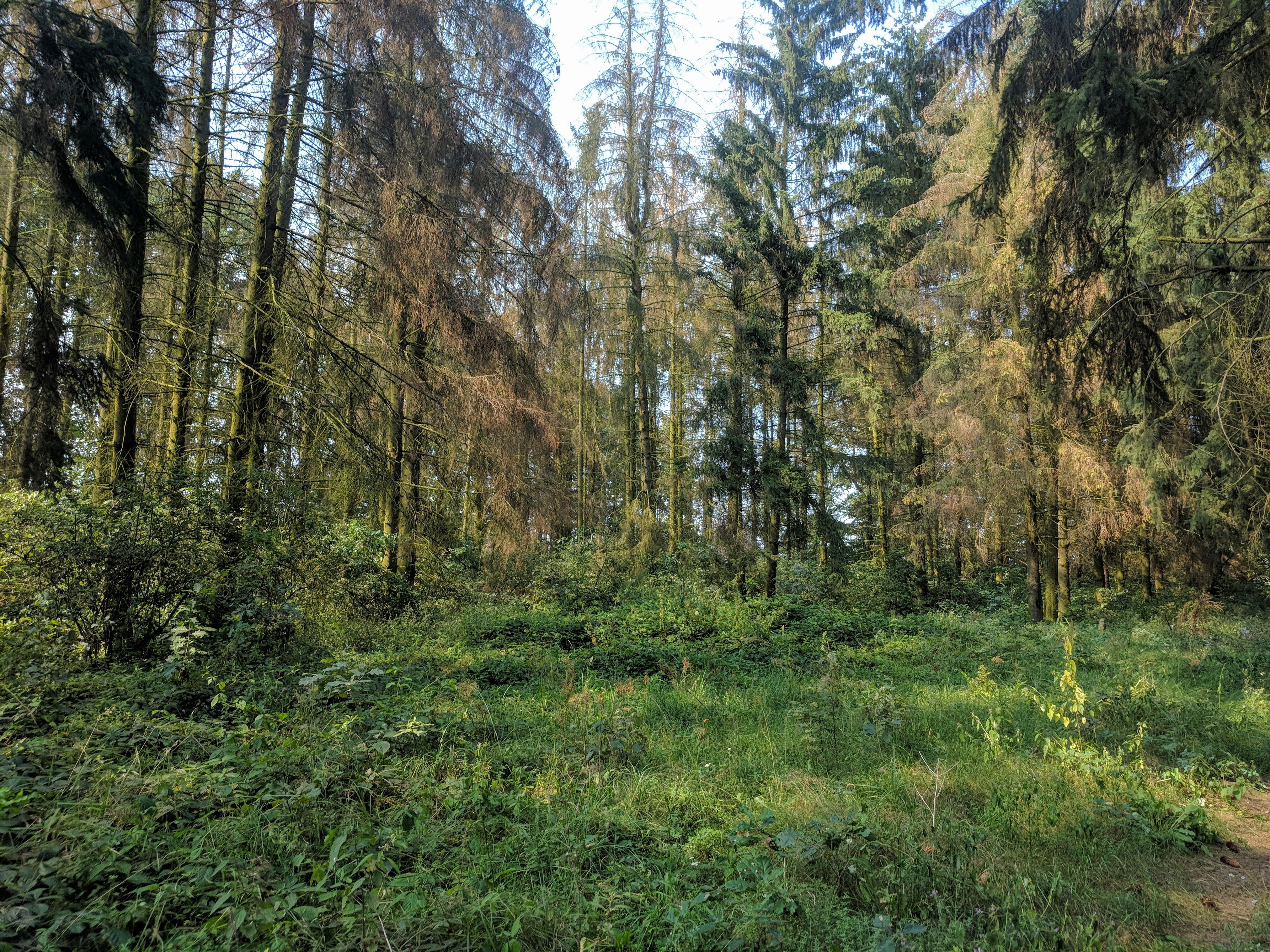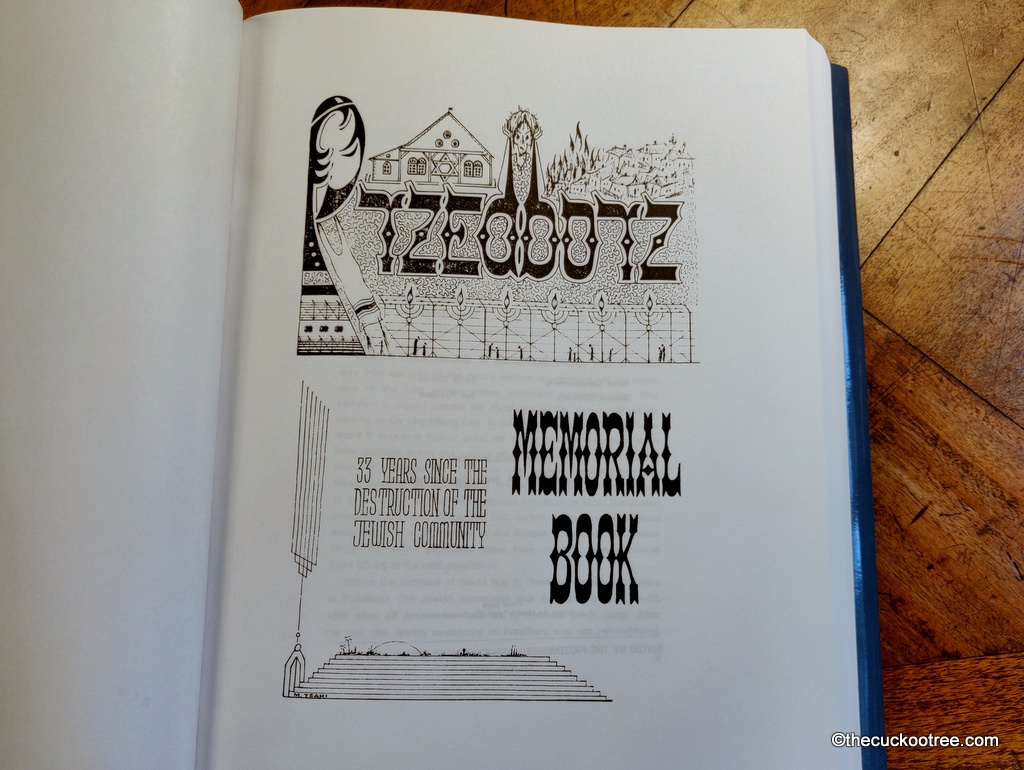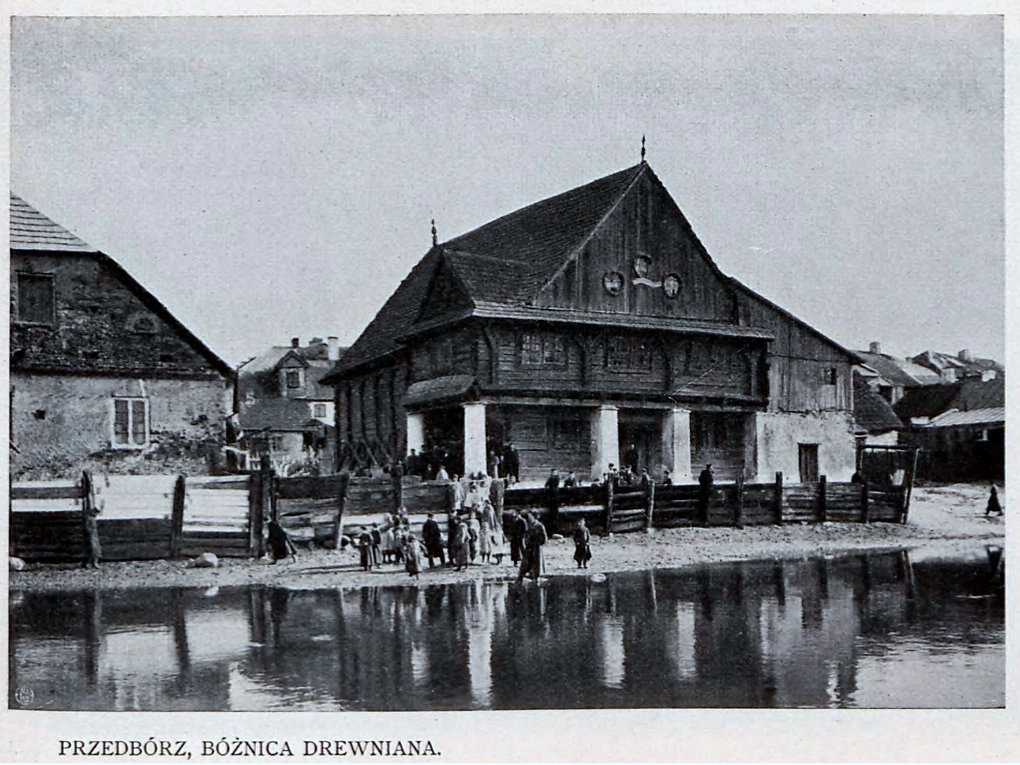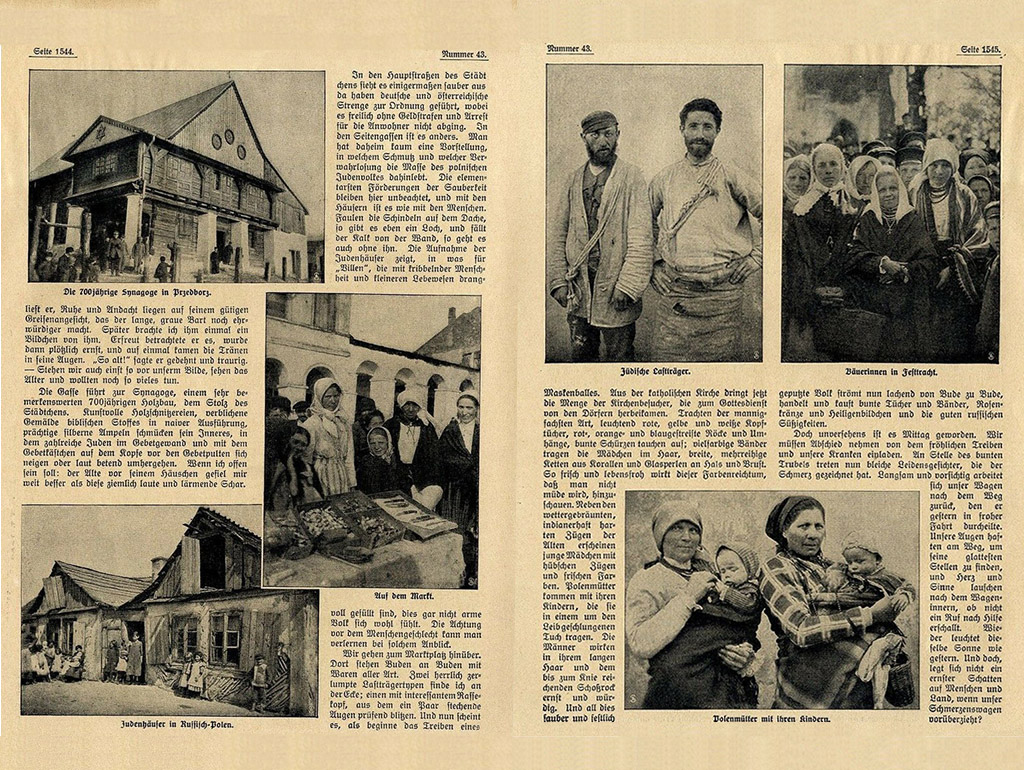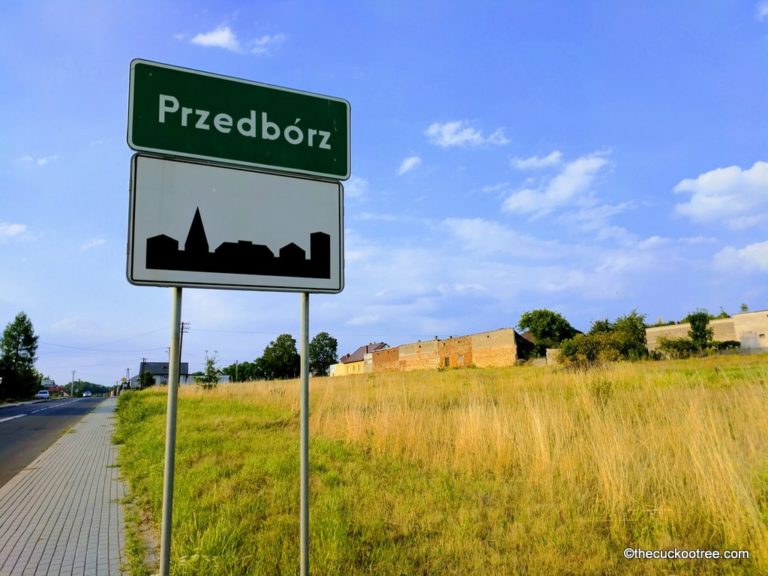
Table of contents
- Przedbórz Burial societies in New York
- The Przedbórz Jewish cemetery
- The Przedbórz synagogue
- Przedbórz Yizkor books
- A 1915 visit to Przedbórz
Przedbórz officially became a city in 1370, and there was an established Jewish population and synagogue documented in 1570. By 1938, the town was between 60 and 70% Jewish. Przedbórz was known as a center for artisans and weavers.
Today, there is very little evidence of the town’s Jewish past.
Geography and nearby villages
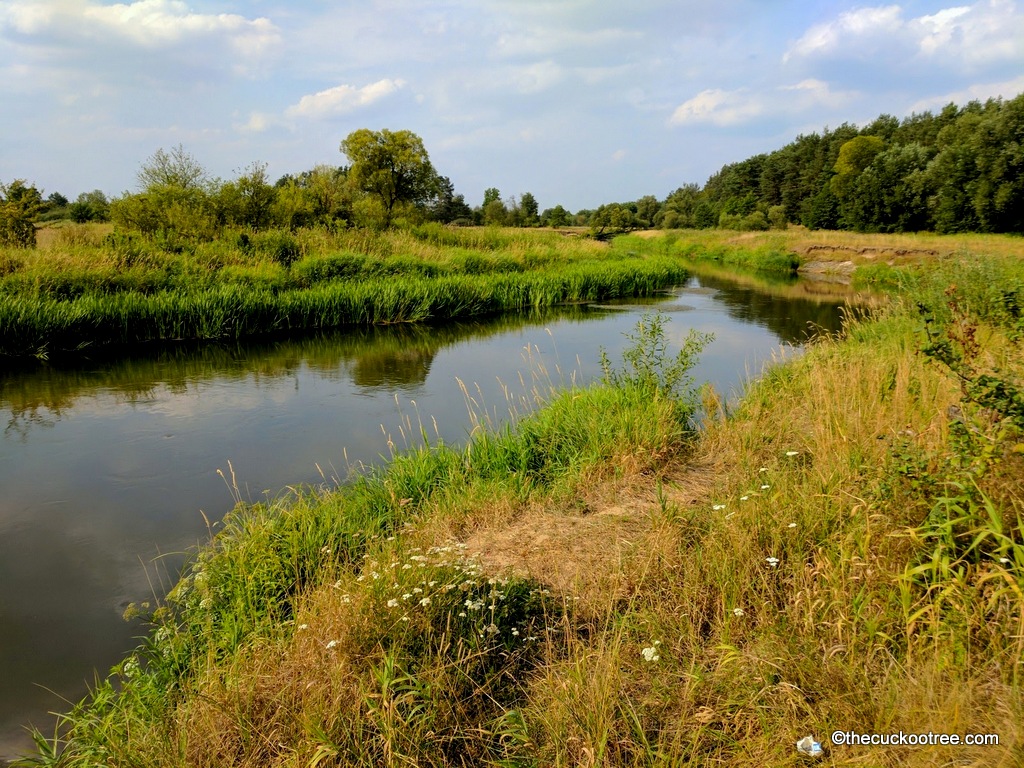
While Przedbórz is a town, it is also a “gmina” or municipality, that contains several nearby villages and hamlets that were included in the Przedbórz records. Most of these were very small, some with only a few families living there, and most are not listed in JewishGen’s community database. If your family lived in one of these smaller villages, they would have to come to Przedbórz for their administrative affairs, so very often the birth of children were registered late, or not at all. Also be sure to check the JRI Poland databases for Włoszczowa and Kielce, as some records can show up there.
Widoma was a suburban community just a few minutes’ walk, over a bridge across the Pilica River. (Know that there are several other Widomas in Poland so don’t get them confused!) In 1862 Widoma had 340 residents, and is the home to Przedbórz’s Jewish cemetery, and a synagogue was built in Widoma in the 1920s. In 1940 a Jewish ghetto was created in Widoma, which had mostly Jewish families living in its center. By the spring of 1942, the ghetto had 4,300 residents, many of them Jews from surrounding communities who had been transferred there before being sent to Treblinka. Today, Widoma is part of Przedbórz.
Immediately south of Rączki is Dobromierz, which is also located in Gmina Kluczewsko in Włoszczowa County, but records are often found in Przedborz. Although small, there are records of Dobromierz from as far back as the 1400s.
Rączki is 8 kilometers outside of Przedbórz. The town name means “little hands” and it can be confusing, as there are several similarly named towns in Poland. Rączki is currently located in Gmina Kluczewsko in Włoszczowa County, but the pre-war records are usually in the Przedbórz books. If you are visiting the area and looking for a place to stay, there is a nice ‘Agroturystyka’ accommodation in Rączki that is a few minute’s walk from the river.
Located at the foot of Fajna Ryba, the highest point in Lodz Province, Góry Mokre is a small village 10 kilometers southeast of Przedbórz that had a Jewish population before the war. In the records, another small village is listed as part of Góry Mokre, called Kolonia Mojzeszow, the latter word meaning ‘Moses’ to denote the village’s Jewish roots. Today, the town is called Mojżeszów, and the population is less than 100.
This site is a good one for seeing exactly where each of these small villages are in relation to larger nearby towns.
Przedbórz genealogy
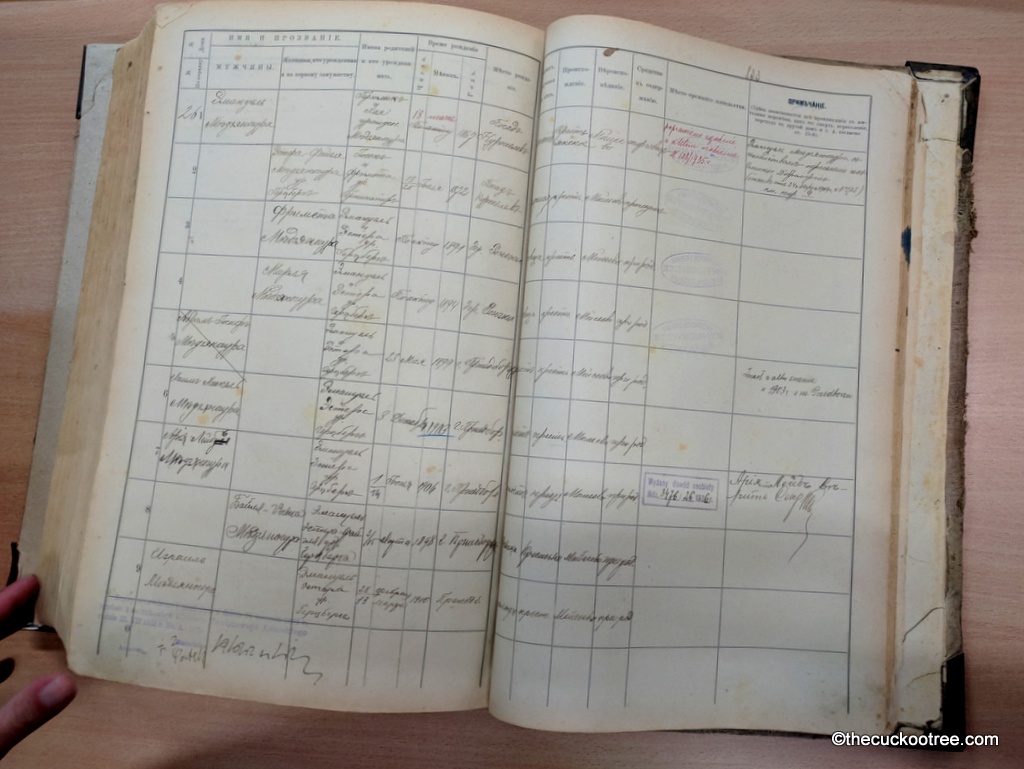
If you’re looking for more information about your Jewish family history in Przedbórz, these links can help.
CRARG
CRARG, the Częstochowa-Radomsko Area Research Group is a private group that translates records for the towns around Częstochowa. One must donate a minimum of $100 per year to view their extractions, but for anyone with family from the area it’s more than worth it. At the time of writing in early 2022, they have 49,048 records from Jews from Przedbórz, including full extractions of Przedbórz 1887-1900 birth, marriage, and death records, which were recorded in Russian, so difficult for researchers to research independently, and more years are in the works. Even if you are only researching Przedbórz, most families had members in nearby towns, and CRARG’s coverage of the area is fantastic (with lots of records not found on JRI-Poland). When you join, the owner Dan will send you reports on all of your surnames and can help you puzzle out local mysteries. For more information, or to join, visit CRARG.
JRI-Poland
JRI Poland has births and deaths from 1810-30 and 32-86, and marriages from 1810-29 and 32-86 indexed, available for free. They also have limited indexes (names only) for births from 1887-1906, marriages from 1887-1888, 1890-1906, and deaths from 1887-1888, 1890 and 1892-1906. Some of these are fully indexed on CRARG.
Search the JRI Poland database (narrow down your search by selecting 20 miles around latitude 51° 05′ and longitude 19° 53′) They’re also looking for a town leader for Przedbórz, if you’d like to throw your hat in the ring.
Local Research
Looking to hire a Przedbórz researcher? Jacek Bednarek is a seasoned researcher who lives in Piotrków Trybunalski and speaks eight languages, including Polish and Russian, plus he can read Hebrew.
FamilySearch
FamilySearch has Jewish records from Przedbórz from 1826 to 1886, including births, marriages, and deaths. You can use the JRI Poland database to find the right records, and then look them up on FamilySearch. Before 1826, Jewish records can also be found in the Przedbórz church records.
You must be in a Family History Center to view the Przedbórz records on FamilySearch. There are Family History Centers in most major cities, and many smaller ones, too.
Polish National Archives
There are many records available on the Polish National Archives site, with more going online regularly. The site is mostly in Polish, and difficult for most to navigate. But with a bit of perseverance, you can find many records not available elsewhere.
- Jewish records from 1826 to 1871 – birth, marriage, and death records from the Kielce archives
- Jewish records from 1851 to 1900 – duplicate birth, marriage, and death records from the Piotrków Trybunalski archives
- Jewish Sports and Gymnastic Organization “Hagibor” in Przedbórz, 1924-1925 – includes list of students
- Questionnaires of Jews, 1940
Also be sure to search their main page for your surname and the town name, as they have listings of many court cases and other documents that your relatives may be found in. You will need to hire a researcher in Poland to retrieve most of these files, however.
Geni
Geni has a project, Jewish Families from Przedbórz. Several hundred former Przedbórz residents are listed, and you can add your own.
Geneteka.genealodzy.pl
Geneteka is a Polish genealogy site that has indexed Przedbórz parish records from 1768 to 1877. However, they have excluded any records that are obviously Jewish from their indexing. It is still worth looking at their collection, or can be helpful if you are researching Christian ancestors from Przedbórz.
More names
- You can find lists lists of names of those buried in the Przedbórz burial societies plots at Montefiore and Union Field Cemeteries here.
- The Przedbórz Yizkor book has a list of names of those murdered during the Holocaust.
- Check out the list of people in the Arolsen Archives from Przedbórz.
- There are more than 3500 names in the Yad Vashem Shoah database of Holocaust victims from Przedbórz.
Additional information about Przedbórz

B&F Compendium of Jewish Genealogy: Przedbórz. Links to some of the top sites about Przedbórz, with a place to add your own information.
Virtual Shtetl: Przedbórz. Virtual Shtetl has a good site with lots of information about Przedbórz and the Jewish history of the town. Use the links on the left-hand navigation bar to explore the site. Much of the information is in Polish, but there are a lot of photos.
Przedbórz Stamps: Don’t let the name fool you, the Przedbórz Stamps site by Sam Ginsberg has a ton of information about Przedbórz and its Jewish history that extends far beyond philately.
Virtual Przedbórz: Virtual Przedbórz allows you to explore, online, how the town looks today.
Encyclopedia of Jewish Communities in Poland, Volume I (Poland): Przedbórz. A fascinating history of Przedbórz covering the formation of the town, the interwar period, and the destruction of the Jewish community.
Swietokrzyski Shtetl Museum: Przedbórz. An interesting history of Przedbórz, primarily during the Interwar period, on the website of the Swietokrzyskie Voivodeship Shtetl Museum.
Przedborz.com.pl: The unofficial town site for Przedbórz has a large section of historical photos and comparisons of the town’s past to its present.
The official town site of Przedbórz (entirely in Polish).

Folk Museum of Przedbórz: This private museum includes a history of the Jews of Przedbórz, with replicas of daily life from the 19th century and a large collection of Judaica, which includes several headstones from the Jewish cemetery that were rescued from the town square, where they had previously been used as paving stones. It’s a strange little museum, but the Polish owner, who is also a poet, is clearly deeply interested in the town’s Jewish past and is happy to discuss it with anyone who stops by.
